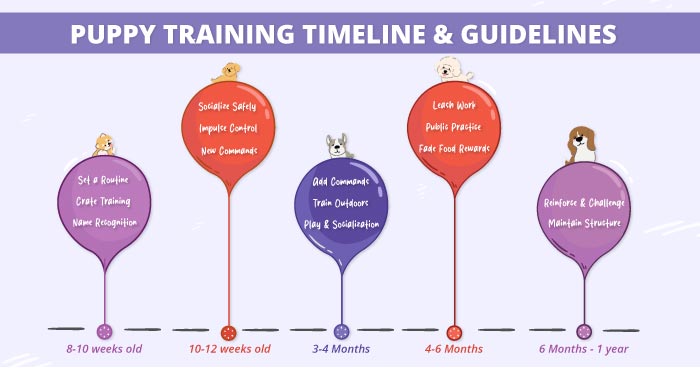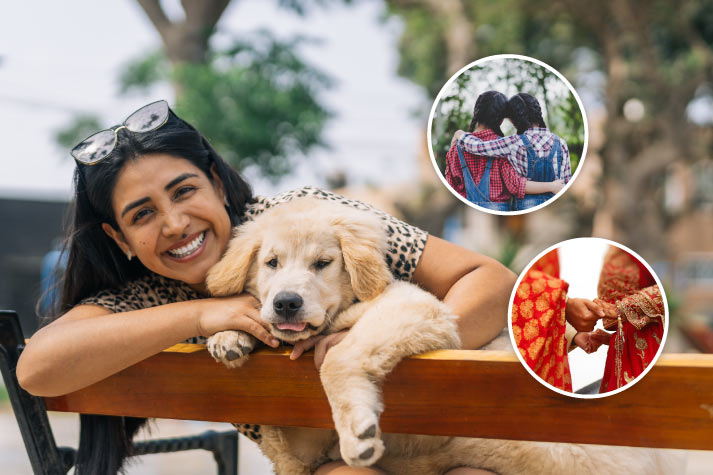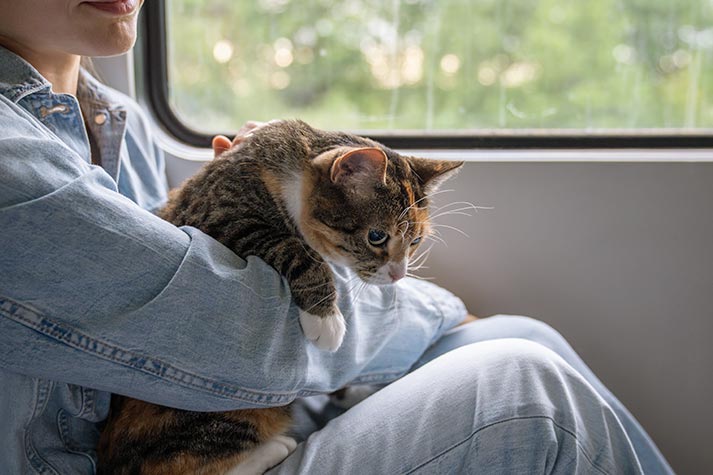
24 Apr
How to Train Your Puppy: A Beginner’s Guide
Few things in life are as exciting as bringing home a new puppy. However, with that joy come several questions, especially if you are a first-time pet parent. What comes next? What should you teach first? When should you start?
It’s easy to feel overwhelmed, but don’t worry. To help your new puppy settle down in their new home, we have made this handy guide with a step-by-step puppy training schedule to take the guesswork out of those early days.
Here’s How to Set Your Pup Up in Their New Home
Bringing Home Your New Puppy
Picture this: you are enjoying a leisurely stroll with a puppy who walks calmly by your side or rests quietly at your feet while you sip coffee outdoors. Every pet parent dreams of an easy-going pet, but that level of ease does not happen by chance. It requires time, patience, and a structured training approach to guide your pup there.
The early weeks can feel like a whirlwind. Puppies are curious, energetic, and still learning the rules of their new world. Nipping, chewing, potty accidents, and barking are all common behaviours during this stage of development. While it may feel overwhelming, these challenges are both entirely normal and completely temporary.
Once your puppy has settled in and begun adjusting to their environment (typically within a couple of weeks) it is time to introduce them to a daily routine and begin basic obedience training. This includes foundational commands, social skills, and positive reinforcement to build confidence and trust.
Not sure where to start? No need to worry. Whether you have adopted a young pup or an older dog new to structured training, this guide will help you build and nurture the habits that lead to a calm, confident, and well-mannered companion, both at home and in public.
Three Things to remember When Training a New Puppy
Before you begin your training sessions, there are three things that you should remember.
- Use Food as a Tool for Training - In the early stages of puppyhood, your dog’s regular meals and treats are more than just nutrition, they are one of the most effective training tools you have. Using food during training helps hold your puppy’s attention, reinforces positive behaviour, and teaches them to look to you for guidance. Instead of handing out treats, try having your puppy work for them during short training sessions. This not only boosts engagement but also creates a healthy foundation for focus and communication.
- Be Patient and Consistent - Training a puppy can test your patience, especially when distractions, mistakes, or restlessness, or fatigue set in. No matter the frustrations though, keep in mind your puppy is still learning how the world works. Building a bond takes time, and learning new behaviours does not happen overnight. Consistency is key.
A structured daily routine, including scheduled potty breaks, meals, play, training sessions, and naps, helps creates a predictable rhythm that helps your puppy feel secure and understand expectations. Over time, this structure encourages calmness, improves focus, and supports the development of good behaviour. - Practice in Short, Regular Bursts - Practice may not make perfect, but it certainly helps build habits. For young puppies, aim for multiple short sessions throughout the day, keeping each one around 5 to 10 minutes. As your pup grows, you can stretch that to about 10 to 15 minutes.
Mealtime offers a natural opportunity to train: instead of offering food freely, have your puppy earn it through basic commands. These mini-sessions help reinforce obedience in a fun, rewarding way.
Once your puppy is fully vaccinated, start taking training sessions outdoors. Practicing in new environments helps your pup generalize their skills, so the good behaviours they have learned at home stick with them wherever they go.
Puppy Training Timeline & Guidelines

While each puppy is different and learns at their own pace, there are a set of timelines that can help shape your routine and training depending on the age or developmental stage your pup is in.
8–10 Weeks Old
This is often when new puppy parents bring their pups home. At this age, focus on teaching the basics, namely name recognition, good manners, early commands, and socialization.
- Set a Routine: Begin a daily schedule with set times for feeding, play, potty breaks, and naps. A consistent routine lays the groundwork for all training.
- Potty Training: Start immediately. Use a schedule; your pup’s age in months divided by two gives you a rough idea of how many hours they can hold it.
- Crate Training: Crucial for housebreaking, building independence, and preventing separation anxiety. Teach them to pause calmly before exiting the crate. This helps introduce impulse control early.
- Basic Commands: Start with Sit and Come, ideally during mealtime using food lures. Keep it playful and encouraging, especially during mealtimes.
- Socialization: Begin with close family and friends. Early positive exposure helps pups handle new people and settings later.
- Name Recognition: Say their name often and pair it with eye contact and rewards. Try the name game using treats to build connection.
- Chewing Habits: Redirect mouthing with chew toys. Teach them what’s fair game and what’s off-limits (like your fingers or shoes).
10–12 Weeks Old
Now's the time to expand your pup’s world, introducing more commands, stronger socialization, and leash exposure.
- New Commands: Introduce Place, Down, and Heel indoors with food rewards.
- Leash & Harness: If not done earlier, now is the time. Let them wear it around the house to get comfortable.
- Socialize Safely: Meet calm, vaccinated dogs behind barriers and expose them to common noises through videos.
- Impulse Control: Have them sit and wait before receiving food or water. Release with a simple cue like “Okay” or “Break.”
- Threshold Training: Teach calmness at doorways and crosswalks to prevent lunging or pulling during walks.
3–4 Months Old
Your pup's growing fast, and now it is time to level up training and structure.
- Add Commands: Teach Stay and Leave It. Practice longer duration commands and link them into short sequences.
- Train Outdoors: Begin Heel to work in low-distraction areas like your driveway.
- Play & Socialization: After full vaccinations, start quality social play with well-matched pups. Introduce structured games like fetch and tug to support commands like Drop It and Come.
4–6 Months Old
With the basics covered, start to shift training into the real world.
- Public Practice: Bring training into the yard or park. Add the 3Ds (Distance, Duration, and Distractions) to every session.
- Leash Work: Take longer walks and fine-tune the Heel.
- Fade Food Rewards: Ask for multiple commands before rewarding or switch to praise and affection.
6 Months to 1 Year
Your pup should now know all basic commands and routines. This stage is about reinforcement and maturity.
- Reinforce & Challenge: Use long-leads to add distance to your Recall and commands. Practice in busier spaces to build resilience against distractions.
- Maintain Structure: Adolescence can bring setbacks; chewing, nipping, or accidents. Stick to your schedule and keep up daily training to stay on track.
Remember, training is about gradual results, not instant. Each week and month should bring steady progress; more socialization with people, pups, sounds, and new environments. As your puppy grows and can hold it longer, gradually space out potty breaks to match.
The first year is all about laying the groundwork: basic obedience, good manners, and daily structure. Stay consistent, and you will set your pup up for a lifetime of solid behaviour. Even if you start a little late, it is never too late to catch up! Steady effort will have them on track by their first birthday.





AUTHOR’S BIO
Carry My Pet
Passionate pet enthusiasts and globetrotters, dedicated to easing furry friends' journeys worldwide. Penning tales of compassion at CarryMyPet, where every relocation is a tail-wagging adventure.